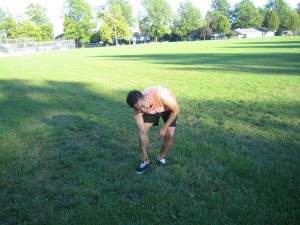Lower back pains that are caused by muscle spasm are common conditions in adults. The causes of spasms can be due to mental stress, improper way of carrying a heavy object or stretching too much. Sedentary lifestyle can also cause back spasms. People suffering from lower back pain caused by spasm have difficulty bending in certain directions and it is characterized by a sharp shooting pain.
[youtube url=”https://www.youtube.com/watch?v=zfs9oyA3pKg” width=”220″]Causes
Quick and sudden movements of the lower back which is the lumbar muscles will cause muscle cramps and spasms. The affected muscles becomes inflamed and overstretched that will weaken the muscle fibers.

Another cause is over bending of muscles while doing exercises or doing household activities which involves a lot of bending. Incorrect sitting position, sleeping or standing and some jerky movements can result in muscle cramps and it is very painful.
A nutrient deficiency and imbalance of electrolytes in the body can also cause muscle spasm. The muscles are not conditioned and “lubricated” due to dehydration can cause spasm of the lower back muscles.
In some cases, muscle spasms and cramps can be caused by the side effects or over dosage of a certain drugs and medications.
Treatment
When it comes to lower back pain, there are first aid measures that you can perform.
- The first thing to do is give the person a muscle relaxer or a double dose of ibuprofen. Any pain reliever that has magnesium salicylate or aspirin can be given.
- Maintain the person in an up-right position. Do not make the person lie on his/her back since it will cause severe pain and lengthen the spasms. When there is spasm and the person is on his/her back, roll the person on his/her side, and by using a hand prop to get the individual off the floor.
- Let the person move gently to make the spasm subside. Let him/her walk around slowly, and if twisting the body and bending still cause pain, then let the person walk straight and not turn the body too much
- Allow the person do some exercise like lifting the knees up, and walking around taking high steps like marching.
- Another exercise to relieve muscle spasm is raising the arms in the air above the head.
- Avoid sucking of the stomach or by bending to pick up something up. Squat and the legs spread to reach down, while keeping the back straight.
- Sit on the chair or stability ball with the legs spread, and this helps relax the lower back.
- Give the person hot and cold compress if the pain reliever subsides or gentle massages on the back.
- Do back strengthening exercises daily.
It is important to seek medical help if the spasm happens every now and then with no reason. This might indicate a medical issue that requires further assessment and care.
